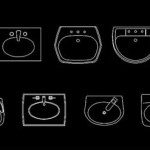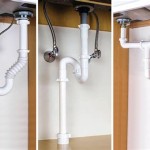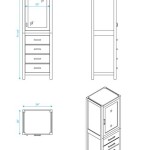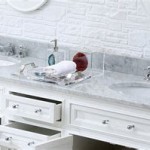How to Remove Bathroom Fixtures
Removing bathroom fixtures is an essential part of bathroom renovation or repair. Whether you're replacing an old faucet, upgrading a showerhead, or simply removing a fixture for disposal, understanding the process is crucial for a successful and safe project. This article will guide you through the steps of removing common bathroom fixtures, including faucets, showerheads, and toilets.
1. Preparing for the Removal
Before embarking on the removal process, it is essential to prepare the workspace and gather the necessary tools. First, turn off the water supply to the fixture being removed. This is usually done by turning the valve located near the fixture or at the main water supply line. Ensure that the water is completely shut off by turning on the faucet or showerhead to check for any leaks.
Next, gather the necessary tools. This typically includes a wrench, adjustable pliers, a screwdriver, a bucket or basin, and a towel. Depending on the specific fixture, additional tools such as a pipe wrench or a hacksaw may be required. Wear safety glasses and gloves to protect your eyes and skin from debris or sharp edges.
2. Removing the Faucet or Showerhead
Removing a faucet or showerhead involves detaching it from the supply lines and the mounting base. Start by loosening the nuts that secure the faucet or showerhead to the supply lines. These nuts are usually located on the underside of the fixture where the supply lines connect. Use a wrench or adjustable pliers to loosen and remove the nuts.
Once the supply lines are disconnected, gently remove the faucet or showerhead from the mounting base. Depending on the type of fixture, you may need to unscrew or pull it off the base. Be careful not to damage the surrounding surfaces. Finally, remove the mounting base from the sink or wall using the appropriate tools.
3. Removing the Toilet
Removing a toilet requires a bit more effort and involves disconnecting the water supply and the drain line. First, shut off the water supply to the toilet by turning the valve located on the supply line. Then, flush the toilet to empty the bowl and tank. Next, disconnect the supply line from the toilet tank by loosening the nut that secures it.
To disconnect the drain line, you will need to remove the bolts that secure the toilet to the floor. These bolts are typically located under the toilet near the base. Unscrew the bolts using a wrench. Once the bolts are removed, carefully lift the toilet and separate it from the drain line. Be mindful of the weight of the toilet and ensure proper support to avoid accidents.
4. Disposing of Fixtures and Cleaning
After successfully removing the fixtures, it is crucial to dispose of them properly. Check local regulations for guidelines on disposal of old fixtures, and consider recycling options if available. If you plan to reuse the fixtures, be sure to clean them thoroughly to remove any debris or dirt.
After removing the fixtures, clean the surrounding area to remove any residues or debris. Ensure that the water supply is shut off and that there are no leaks. If necessary, replace any damaged parts or worn-out seals to ensure a proper and leak-free installation of the new fixtures.
This guide provides a basic overview of how to remove common bathroom fixtures. Remember to prioritize safety and follow safety precautions throughout the process. Consult with a professional plumber or contractor for any complex or challenging situations. Proper preparation and attention to detail will help ensure a successful and hassle-free removal process.

Diy How To Replace A Bathroom Sink Faucet Remove Install

How To Remove And Install A Bathroom Faucet

How To Remove And Install A Bathroom Faucet

How To Remove And Install A Bathroom Faucet

Diy How To Replace A Bathroom Sink Faucet Remove Install

How To Remove A Bathroom Faucet

How Do I Replace Bathroom Sink Faucet Handles Cleaning More

How To Remove And Install A Bathroom Faucet

How To Remove A Bathroom Faucet

How To Remove And Install A Bathroom Faucet







